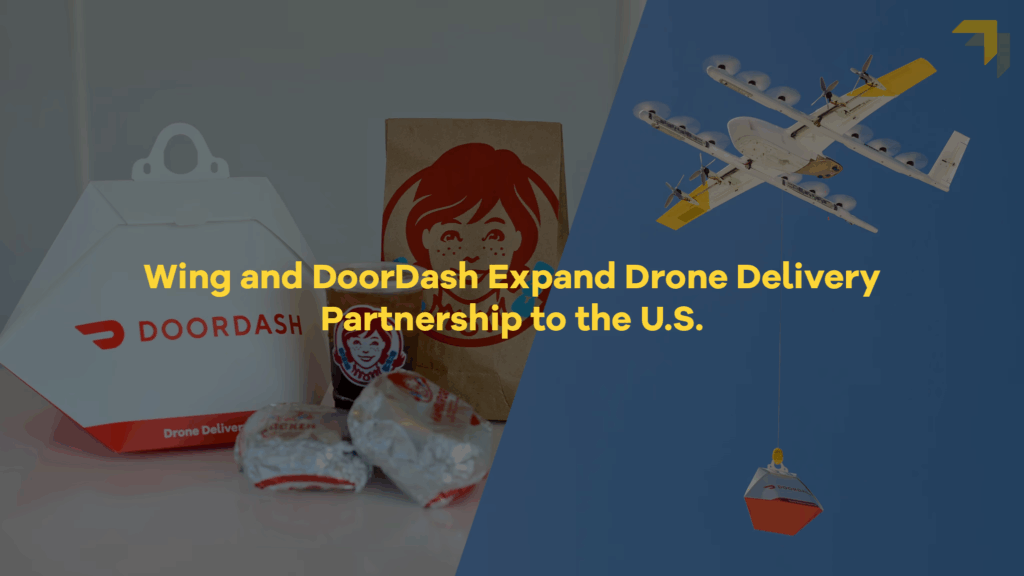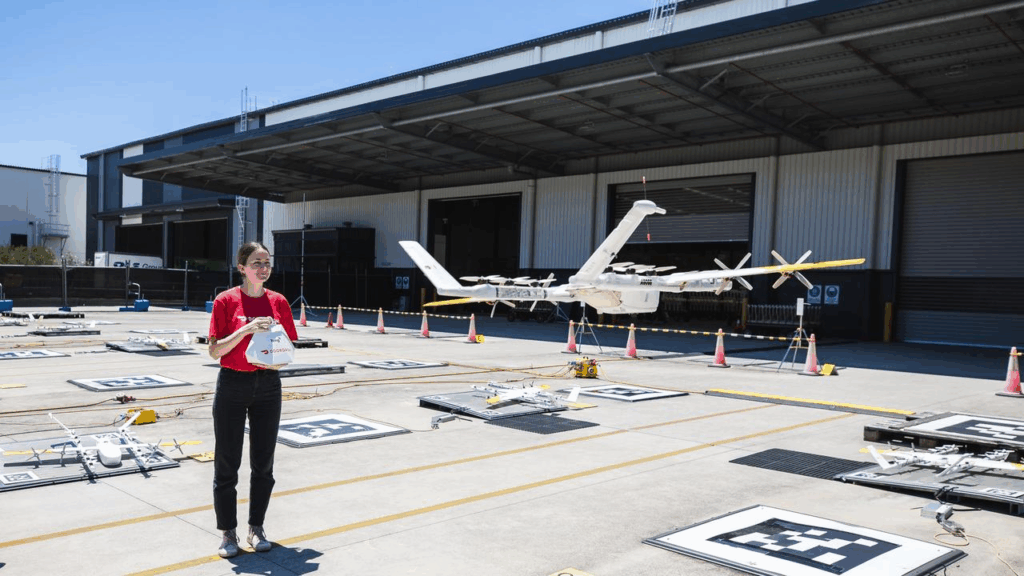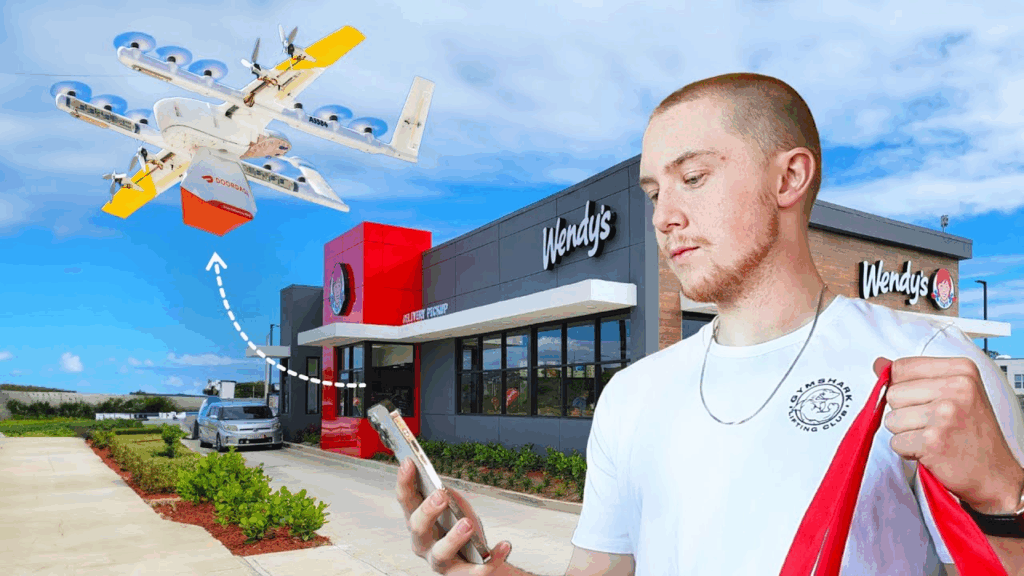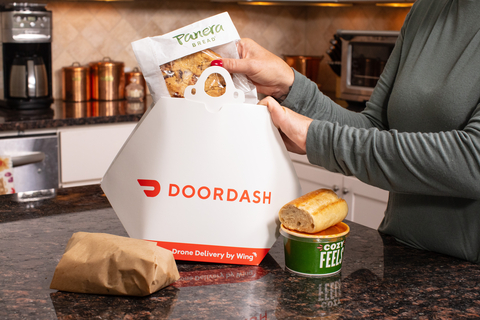First off, DoorDash fumbled the bag…
You launch a drone delivery service called Wing… and don’t partner with Wingstop?
That was the meme of the decade just waiting to happen. Instead, they went with Panera, a brand whose most iconic dish is… lukewarm mac & cheese. Why? Because it’s already cold, cheap, and borderline mush. You don’t have to worry about temperature control when your food starts at room temp.
It’s the culinary equivalent of throwing a TV dinner out of a moving plane and hoping it lands on a welcome mat.
Drone Delivery Is the New Novelty of the Decade

Yes, watching a robot airlift your latte to your driveway is kind of cool. But you know what else is cool?
Stuff that actually works.
This whole drone thing is the latest in a long line of “innovation for innovation’s sake.” And spoiler alert: it’s not going to scale—at least not in any way that makes economic or operational sense for most people.
We Still Need People — Crazy, Right?

There’s a reason why gig apps like DoorDash, Uber, and Instacart blew up. It’s not just because they’re fast—it’s because humans can adapt.
We can:
- Knock on your door.
- Text you if your pin is wrong.
- Navigate traffic, weather, rude customers, wild dogs, and malfunctioning elevators without crashing into a tree or dropping a burrito in a cactus.
Drones can’t do any of that.
They operate on ideal conditions and perfect planning. But real life? That’s messy. Delivery drivers don’t just move food—they interpret chaos. That’s not a “feature” you can upload.
The Logistics Just Don’t Fly (Pun Intended)

For drone delivery to work at scale, a ton of factors need to line up perfectly:
- Restaurants need to package food the same way every time to avoid leaks, spillage, or containers exploding mid-flight.
- Weather has to cooperate. Wind? Grounded. Rain? Grounded. Summer in Phoenix? Your smoothie just became soup.
- GPS has to be surgically accurate. If the drone drops your lunch on the next street over, now you’re hiking for a salad like it’s the Oregon Trail.
Let me give you a real-life example: In Phoenix, we’ve got Waymo, the self-driving car service. Super cool, right? Especially when it’s cheaper than Uber.
But one time, my best friend ordered a Waymo to my apartment… and it dropped her off a quarter mile away at a shopping plaza. In the middle of summer. In Phoenix. That’s a hike of shame at 110 degrees.
Human Beings Provide Value Beyond Speed
When I vacationed in New Orleans, our Uber driver gave us tips on the best spots to visit, local food gems, and areas to avoid. You don’t get that from a drone. You don’t even get that from Waymo. You get silence and hope that it stops at the right location.
The human touch matters.
And the push to replace every task with automation ignores the fact that we aren’t just warm bodies—we’re problem-solvers. We improvise. We communicate. We hustle.
Here’s a Wild Idea: Pay Delivery Drivers Better

If DoorDash really wants to make deliveries faster, here’s a revolutionary concept: use the money you’re spending on autonomous aerial machines to pay your human drivers more.
You’ll get:
- Faster deliveries
- Happier workers
- Fewer soggy sandwiches delivered to the wrong zip code
But of course, that doesn’t look as good on a tech investor pitch deck.
The Core Stupidity of Drone Delivery

This idea doesn’t fix anything that’s broken. It’s not solving a problem—it’s creating new ones under the illusion of progress. And most of the time, when corporations use phrases like “efficiency” and “innovation,” what they really mean is:
“We want to cut labor costs without improving the customer experience.”
Spoiler: When you cut humans out of the process, the product suffers. Every time.
Final Thought: We Suck Sometimes, But We Need Each Other

Sure, people mess up. Orders get dropped. Attitudes get salty. But at the end of the day, we need each other. Humans are still the best delivery system on Earth, whether it’s dinner, a ride, or a good conversation with a stranger on the way to the airport.
If corporations really want to impress us, they should stop spending millions trying to replace people—and start investing in them instead.
Until then, I’ll be here waiting for a Wing drone to drop off some wings.
Just kidding. I use real people for that.
Do you like cars? Check out my article about American Muscle Cars > https://mouthpiecephx.com/automobile-all-the-stats-facts-and-data-youll-ever-need-to-know/



